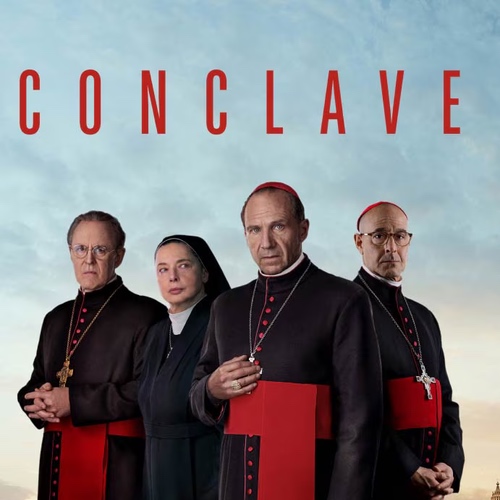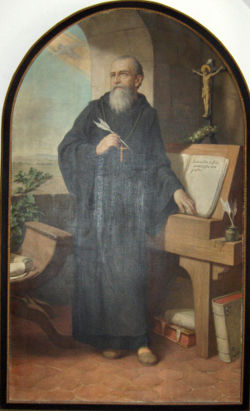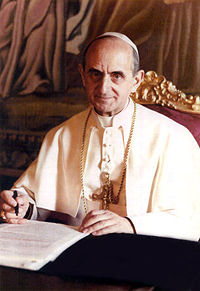
The Church Is What We Do Next
The movie Conclave, a politically-religious thriller, is currently in cinemas. Nominated for six Golden Globe Awards, it deservedly won Best Screenplay.
The pope has died. The cardinals gather and are sequestered in a conclave to elect a successor.
Top-tier actors Ralph Fiennes, Isabella Rossellini, Stanley Tucci, John Lithgow, and Sergio Castellitto bring to life Robert Harris’s 2016 novel of the same name. The music is dramatically spectacular, and the cinematography is visually stunning—although some viewers may flinch at its Handmaid’s Tale-like imagery.
The pacing of the film, directed by Edward Berger (All Quiet on the Western Front, 2022), keeps viewers riveted, even as the story weaves through layers of intrigue.
It is clever that the book’s Dean of the College of Cardinals (who presides over the conclave), Jacopo Lomeli, is renamed Thomas in the film. Not since the wonderful 2008 film, eponymously named “Doubt”, has the positive value of religious uncertainty been so well expressed on the screen.
“Doubting” Thomas helps to deftly explore the tension between faith and doubt, reminding us that uncertainty is not the enemy of belief but often its truest companion.
Set in the present day, Conclave sharply delineates the divisions within Roman Catholicism— around liturgy, gender, scandals, and sexuality. In the movie, the Pope lives (and dies) in Casa Santa Marta. Pope Francis moved there from the Apostolic Palace. The cardinals stay there. Vatican locations are credibly reproduced in the film, but Casa Santa Marta is transformed into a grey, austere place of confinement.
Some viewers may struggle with the film’s portrayal of the human complexities and political intrigues of church life. Yet the film captures this tension with honesty: “We serve an ideal. We cannot always be ideal.”
The book and film are impeccably researched, but no “religious” film is immune to nitpicking by those familiar with its subject. For me, the breaking of the seal of confession strained credibility. Clergy colleagues interpreted it as a choice between two evils, but I found my suspension of disbelief momentarily faltered.
The plot hinges on a cardinal in pectore (secretly appointed by the pope), who canonically cannot participate in a conclave (Canon 351 §3). The book resolves this by suggesting the Pope changed the rule; the film offers no explanation. This oversight is believable —Pope Francis himself has bypassed canon law recently, appointing Fr. Timothy Radcliffe as a cardinal without episcopal ordination (Canon 351 §1).
Another minor inaccuracy lies in referring to the College of Cardinals as an “Order.”
More noticeable, however, are the mitred cardinals wearing sumptuous red chasubles, alongside deacons oddly dressed in a different liturgical colour, listening to a homily by the Dean. Chasubles are proper only at the Eucharist (Mass), yet there’s no altar or crucifix to indicate a Eucharistic context. These artistic liberties, while distracting, remind us that this is fiction.
Unexpected twists punctuate the narrative. While some critics feel the final twist “blows a yawning hole in the movie,” I found it engaging. The film’s humanity shines through in its characters—scrolling on phones, vaping, or smoking cigarettes—while navigating their service to an ideal.
One of the film’s most memorable moments is the declaration: “The church is not tradition. The church is not the past. The church is what we do next.” This resonates beyond Roman Catholicism. In my Anglican denomination, St. Augustine’s Chair is—as the film dramatically declares— vacant: sede vacante. Factions will be working hard in Conclave-like gatherings. Beyond these contexts, Conclave illuminates the tensions within Christianity amid today’s complex, fragmented world.
Whether viewed by those deeply immersed in a religious tradition or by those more attuned to its political and human drama, the film challenges people to grapple with the human complexities of faith, power, and moral compromise.
Unlike the many religious movies filled with cheesy, saccharine piety and B-grade performances, Conclave stands apart. Thought-provoking and deeply human, I highly recommend it.
This review also appears in Anglican Taonga.
Do follow:
The Liturgy Facebook Page
The Liturgy Twitter Profile
The Liturgy Instagram
and/or sign up to a not-too-often email



